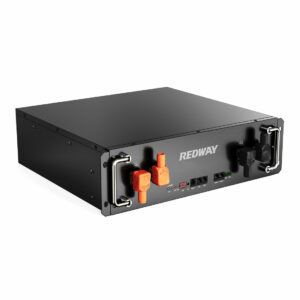How long will a 200Ah battery run an appliance that requires 1000W?
A 200Ah battery can power a 1000W appliance for approximately 2–2.4 hours under ideal conditions, assuming a 12V system. Actual runtime depends on battery voltage, discharge efficiency (~80% depth of discharge), and inverter losses (~10%). For example, a 12V 200Ah battery stores 2,400Wh (12V × 200Ah), delivering ~1,728Wh usable energy after efficiency losses—enough for 1000W loads for 1.7 hours.
How does voltage affect runtime calculations?
Voltage determines total energy capacity. Batteries with identical Ah ratings but higher voltages store more watt-hours (Wh). A 24V 200Ah battery provides 4,800Wh—double the energy of a 12V system—extending 1000W runtime to ~3.5–4 hours after losses.

Battery voltage directly impacts energy storage through the formula Wh = V × Ah. Pro Tip: Always verify your battery bank’s nominal voltage before calculations—mismatched assumptions create large errors. For instance, industrial 48V systems maximize energy density: a 48V 200Ah battery holds 9,600Wh, theoretically powering 1000W devices for 9+ hours. However, few appliances operate at 48V DC, requiring inverters that introduce 5–15% losses. Transitionally, while Ah measures charge capacity, Wh reflects usable energy—the critical metric for runtime.
What efficiency factors reduce runtime?
Inverter losses (85–95% efficiency) and depth of discharge limits (typically 80%) reduce usable energy. A 12V 200Ah battery’s 2,400Wh becomes ~1,632Wh after 15% inverter loss and 80% discharge—cutting runtime from 2.4 to 1.6 hours.
Key factors include:
| Factor | Impact | Typical Loss |
|---|---|---|
| Inverter Efficiency | Converts DC to AC | 10–15% |
| Depth of Discharge | Prevents cell damage | 20% reserved |
| Battery Age | Capacity degradation | Up to 30% after 500 cycles |
Practically speaking, a 3-year-old lead-acid battery might only deliver 1,200Wh instead of 2,400Wh due to aging. Transitionally, why do inverters matter? A 1000W microwave drawing 1,100W surges could trip low-quality inverters, interrupting power prematurely.
RackBattery Expert Insight
FAQs
Can I connect two 12V 200Ah batteries for longer runtime?
Yes—wire them in parallel for 24V 400Ah (9,600Wh), doubling runtime. Use identical batteries and monitor voltage balance to prevent cell stress.
Why does my 1000W appliance shut off after 1 hour?
Likely due to voltage sag in lead-acid batteries below 11V—switch to lithium or reduce load to 800W for stable operation.



